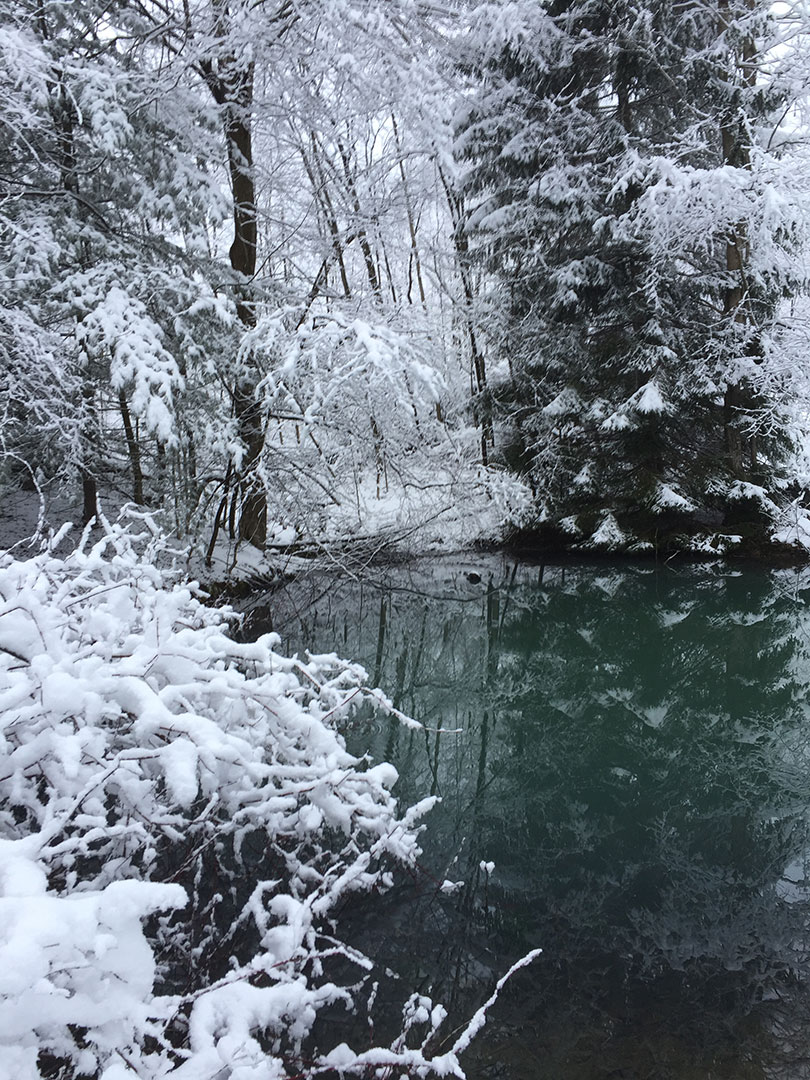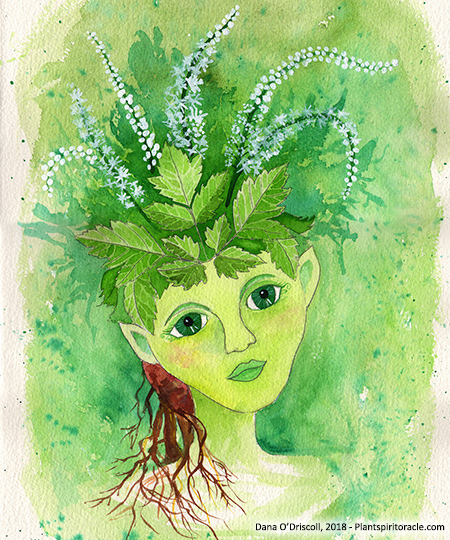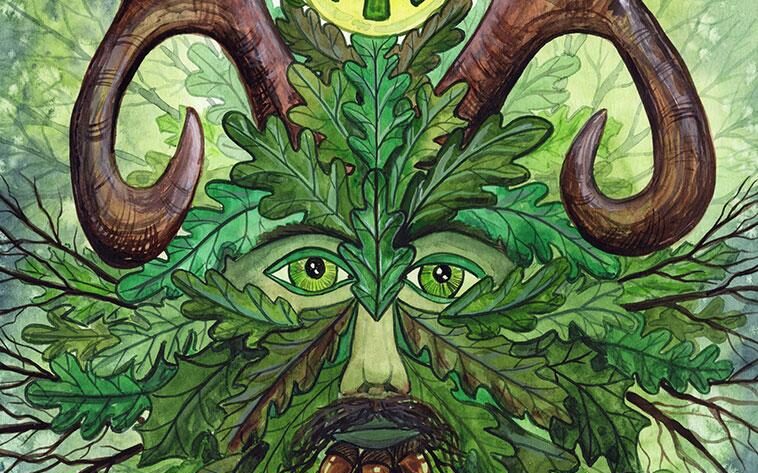In the fall, I always feel like I’m fighting against the coming dark at the time of the winter solstice, and each year, I have to learn the lesson anew. This year proved particularly challenging for a few reasons. After the time changes at Daylight Savings time, and the sun starts setting at 3:30pm. It is down by 4:30 and completely dark by 5:15pm. As a homesteader, in preparation for spring planting and the winter to come, there always seems to be so much to do. Bringing in the harveset, preparing the greenhouse, preparing and clearing garden beds, stacking wood, cleaning gutters, shoring up the hen house, and doing all of the necessary multitude of other preparations for the coming winter. As the fall deepens, each day, the light continues to wane, and there is less light each day to work with. On many days when I go to work, I rise before the sun rises, I am on campus all day in a windowless office, and I leave campus after the sun has set–literally never seeing the sun, sometimes for days on end. These “lack of sun” issues were certainly heightened this year, by our region having the rainiest season on record. Many of us in Western PA felt like summer never happened; an extremely rainy and cold July and August meant that the warmth never had a chance to seep into our bones. These climate changes are the new norm, but they certainly make it difficult to adapt! Finally, and perhaps most salient, I think the cultural darkness has also left its mark on many of us in 2018; it was a hard, dark year. No wonder as the light wanes, I found myself really mentally fighting the coming darkness of the winter solstice.

But whether or not we want to face the darkness, it is now upon us, as it will be each year of our lives. Earlier, I wrote about embracing the darkness at the winter solstice on this blog. I’ve also written about enacting a winter solstice vigil during the darkest night of the year and about sustainable and magical activities for the winter solstice. In re-reading these, I remind myself that the lessons of this year are powerful, and perhaps, each year, we must learn to embrace the darkness anew. So today, I offer three additional insights for the lessons of the winter solstice and thinking about embracing the darkness during this time.
Lessons of Darkness, Again and Again
The irony is that in my earlier posts about the winter solstice, they seemed so certain, so firm, as if I had found the answer that helped me embrace the dark. The truth is, for this druid at least, there is no “one” answer to addressing the coming of the darkness. I am in a different place as the wheel turns again, and the darkness of each year finds me in a different mindset, different life circumstances, and different present times. Such that, particularly for this holiday, learning how to work with the Winter Solstice must be learned and deepened each year anew. Each holiday on the Druid’s Wheel of the Year offers us this same lesson–a chance to deepen our experiences with the magic of that sacred time. For Alban Arthan, the darkness requires a different kind of interaction and engagement with the world–a time of quietude, slowness, of otherness. And we must simply let ourselves be present in it and embrace it. And for some of us, we have to teach ourselves this lesson again each year.
Perhaps, saying that we have to learn a lesson is not the right way of thinking about it. It is almost like we have to come to a place of acceptance of this time, this dark, this cold. There is something so joyful about the light of summer, and that light is so far away. As the light wanes to nothingness, those of us who are stuck indoors at jobs may notice that all of our “light hours” are gone during the working week. Further, the cold and dreary days set in, and some days, it hardly feels like the sun is there behind the clouds at all. Darkness requires us to step away from “business as usual” and re-orient ourselves to this time. Culturally, this re-orientation is extremely difficult because the hustle and bustle of the holiday season is in full effect. If anything, our lives are the busiest this time of year, yet nature is telling us hey, you’ve got to slow down. I think this is part of why there is so much depression around the holidays: we are fighting our natural instincts. And perhaps that’s why each year, it seems of all of the wheel of the year holidays, I find this one to be the most difficult to adapt to, to embrace, and to accept.
Indeed, my first lesson is that the darkness may always be difficult for many of us. In the same way that nobody wants to have bad things happen in their life, experience pain or loss. But like the dark, these things are inevitable, just as the darkness of the winter solstice is inevitable.
The Lesson of the Seed

In the last week, two seed catalogs arrived, reminding me that while it may be dark, planning for the coming season offers hope. As I browse the seeds, thinking about their magic and life, I realize that we can learn a lot about embracing the darkness from starting seeds. I think about all of the seeds of the self-seeding annuals, perennials, and nuts that the squirrels buried this past fall season: those seeds are there, covered in dark soil, awaiting the spring. Awaiting warmth, moisture, and a chance to grow. The darkness holds these seeds, preserves them, and allows them to be in a time of stasis before they spring forth.
In fact, many of the seeds of some of the rarest and medicinal plants require “cold stratification.” The seed packets tell you to put the seeds in your refridgerator for a period of time, usually some weeks or months, for without this period of cold, the seeds will not grow. Black cohosh, a critically endagnered forest medicinal plant, is one such plant that requires cold stratification. For years, I attempted to do just as the seed packets asked–putting them in the fridge in a damp paper towel for three months, as requeted, then planting them indoors with my other seeds and hoping they would grow. For years, no sprouts happened. The seeds simply would not grow. Last year, I stuck the seeds right in the ground in the fall, after clearing away and marking little areas. Sure enough, in the spring this year, the seeds came forth and now I have several beautiful black cohosh plants growing on the property in addition to some live plants I had purhcased and planted.
I wonder: how many of our most sacred and magical ideas are just like that Black Cohosh, requiring that darkness and incubation period? There are seeds we plant that must have their own time of darkness and cold before they can spring forth into the light of day. We need the darkness, just as the seeds need the darkness. We need the quiet, the slowness, the time for reflection and introspection, before the seeds of our ideas can sprout in the spring.
The Lesson of the Roots
Another aspect of nature reminds me of another important lesson about darkness. Roots on trees and plants are extremely sensitive and require darkness to live. If roots are exposed to air and light, they will almost immediately be damaged. Enough exposure will kill the roots, thereby killing the plant. I remember the first time I was planting trees as a new druid. I had no idea how sensitive roots were, and I had left a number of trees’ roots exposed to light and air while I dug holes. These little planted seedlings struggled mightily, I hadn’t realized that I had damaged their roots by exposing them as such. They eventually did live, but only after a tremendous amount of care: water, singing, sunlight, and sitting with them. This was certainly a powerful lesson for a new druid!

Even many root crops, like potatoes and Jerusalem Artichokes, prefer to stay in the darkness and space within the soil. When exposed to too much light, these crops go “green”; this greening produces Solanine. Solanine is actually slightly toxic to humans, creating symptoms of nausea and upset stomach when consumed. How ironic that that which we want to embrace–the light–is so detrimental to the root crops.
But there is a deep lesson here about darkness and why we need this winter solstice time. Our own roots–that of our spirits, that of our creative practices, that of the core of our beings–are in need of the same kind of darkness. Our roots are our grounding, the place of spirit and of the soul. If the dark offers us a time for quiet contemplation, for rest, for rejuvenation: all of this is necessary if we are to bring any fruit into the world. Fruit will not happen without strong roots, and strong roots do not happen without darkness. Otherwise, we are just producing Solanine.
Concluding Thoughts
The seed needs dark soil to spring forth. The roots cannot be exposed to light without damaging or killing the whole plant. Potatoes go green in the light. Maybe we are the same. The roots of our being are found only in the times of darkness: within ourselves, in our dreams, in the promise of a new beginning, in the quietude that can only be found in rest and open time. We need the darkness as we need the air to breathe. Blessings to you on the upcoming long night–may your spirit soar.




Reblogged this on Blue Dragon Journal.
Reblogged this on Paths I Walk.
Love this. I am going through just such a time, having had significant life changes and losses in the last 18-22 months, and very recently recognized that this time is a kind of stratification experience for me, as well. Also, I can’t help noticing that the word solanine contains the word Sol. As much as we love the Sun and its light, even sunlight can harm us if we get too much. Balance is key, as always!
Reblogged this on Rattiesforeverworldpresscom.
Wonderful illuminating article… and the “Spirit of Black Cohosh” reminds me how much I am looking forward to your coming deck!
Reblogged this on dreamweaver333.
A very powerful post! Thank you!
I am again motivated, inspired and calmed by your post.
Winter darkness, for me was long a time of depression and mourning the new life and energy of the other seasons.
However, in the past few years, I have found a gift within the shortened daylight hours and cold weather.
It is actually the opposite of what I had always felt.
I found the gift of time. Inward self care time. As our ancestors and so many in the animal world do; I retreat in many ways. Spend more time in my home. Reflecting, reading, doing quieter activities and chores.
I now see the winter as “my time” to rest, heal and plan for the other busier seasons.
Bless and thank you, for your insights always bring new knowledge and insight.
Many thanks! I am going to share it in our Garden newsletter and on FB.
Your post about Winter Solstice were just what I was looking for, thank you! With Winter solstice at 2:23pm, do you do the vigil Thursday to Friday, or Friday to Saturday?
Blessed Solstice to you and yours, may you rest and dream through the darkness and rise in Spring with new knowledge and creativity.
Blessed solstice to you too, Almira! 🙂